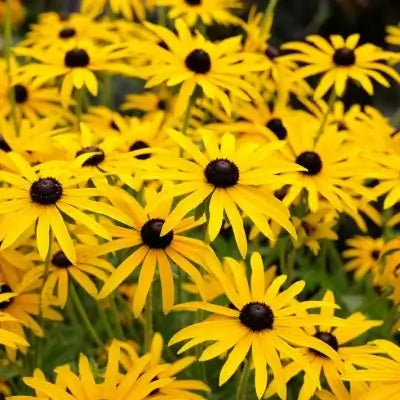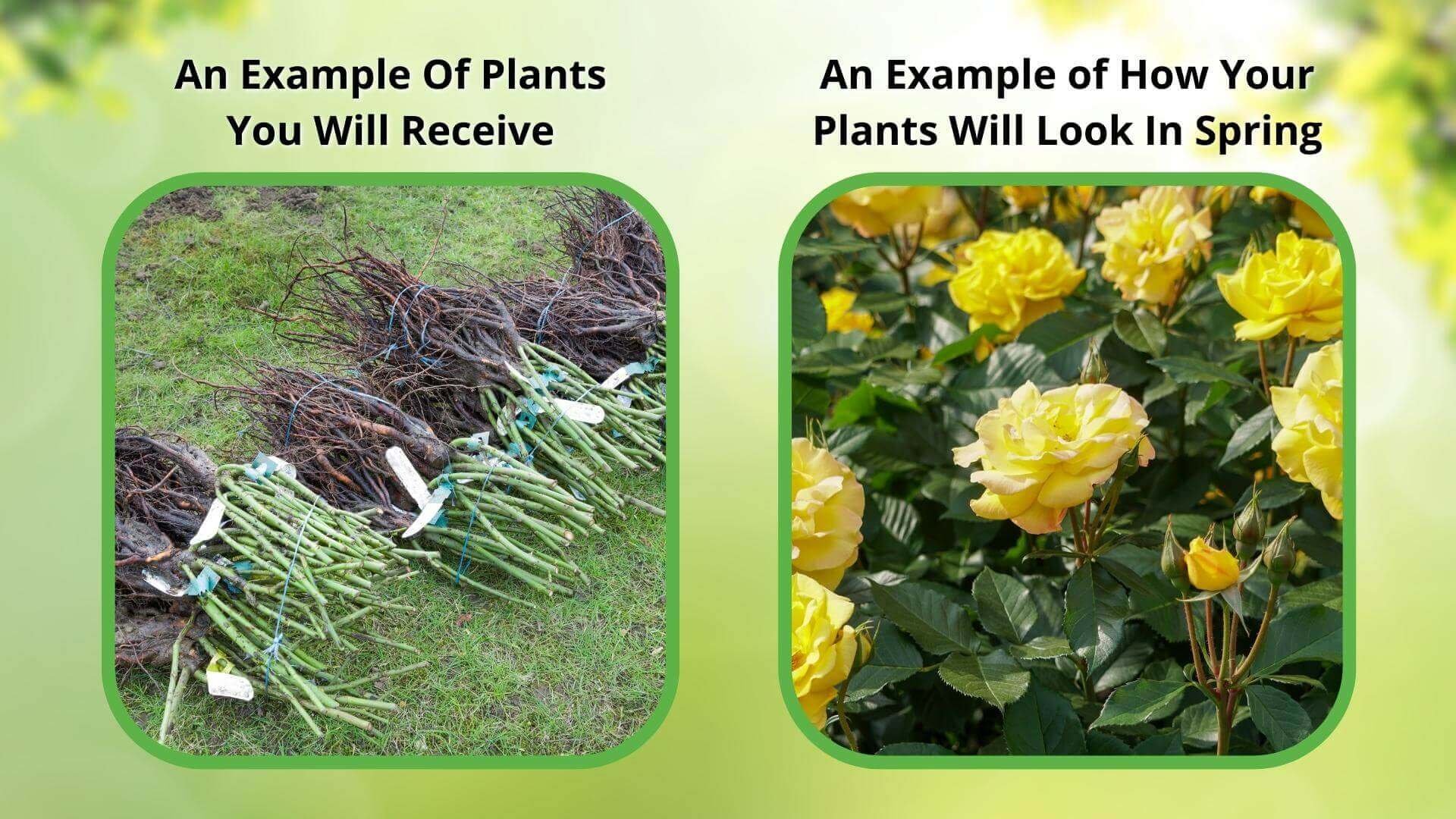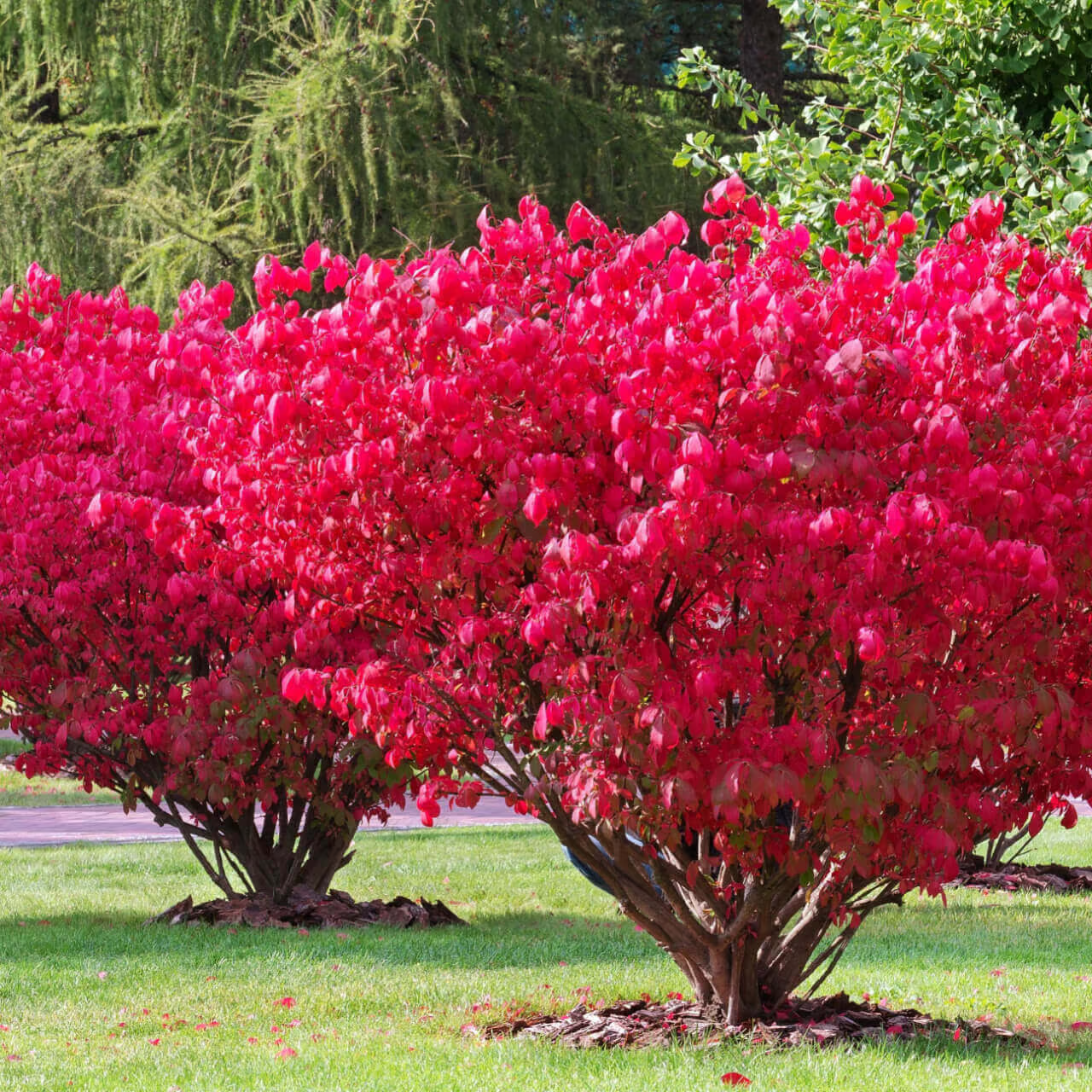
perennial plants
Vibrant fall foliage adds color
Attracts birds and wildlife
Drought-tolerant once established
Thrives in
ZONE 4ZONE 5ZONE 6ZONE 7ZONE 8Planting Season:
Nov-AprilWhen you add one plant to cart, it automatically adds the second one free on Bogo deals.
Burning Bush (Euonymus alatus) is a widely used decorative shrub prized for its red-hot leaves, brightening any landscape or garden. This durable, low-maintenance shrub is perfect for year-round interest and stunning fall foliage.
Any gardener can easily plant this shrub. This shrub prefers well-drained soil and is shade-tolerant in full sun to part shade. Once established, it requires little maintenance. It is drought-tolerant, pest-resistant, and only occasionally pruned to keep it tidy.
It is known for its spectacular autumnal changes. Its bright green leaves in the summer make it a tall, erect shrub. As fall draws near, the leaves blaze red and burn for several weeks. Small greenish flowers bloom in spring and summer, followed by decorative red berries that entice wildlife.
The shrub forms a neat, oval shape, reaching 6 to 10 feet tall and wide. Its dense growth makes it a great choice for hedges, borders, or individual focal points. With proper care, it is a long-lasting plant that will survive for decades.
Life Cycle
Burning Bush shrubs are grown to perfection at TN Nursery and shipped as fresh-cut plants. These plants grow quickly, providing you with glorious seasonally changing foliage and enduring beauty. Take it into your garden and witness an unforgettable blaze of fiery leaves every autumn!

Height at Maturity
Over 10 Feet
Care
Burning Bush thrives in well-drained soil and requires regular watering during dry spells. It should be pruned in late winter or early spring to maintain its shape. Although it is generally pest-resistant, it's important to watch for signs of disease. Fertilize in early spring to promote vibrant fall color.
Plant Reproduction
Burning Bush spreads through seeds dispersed by birds and animals.
Plant bare-root shrubs during the more excellent spring or fall months, from November through April. Dig a hole twice as wide as the root system and slightly more profound than its height. Position the shrub so that the top of the roots is level with the ground, and put back the soil dug over the roots. Apply a 2-3 inch layer of mulch around the base to retain moisture and suppress weeds, ensuring the mulch does not touch the shrub's stem. Water regularly, especially during the first year, to establish strong roots. Prune shrubs as needed to promote healthy growth. In the spring, fertilize with a balanced, slow-release fertilizer suited to the specific needs of the shrub.
Shipping date depends on the date displayed and chosen when you order from the product's page.
We only accept returns on plants verified dead. If you think your plants have died, we offer a 1 year warranty, please use use this File a Claim Link to verify dead plants and start with return warranty process.






Brilliant Autumn Color:
Burning Bush leaves turn a fiery red in fall, adding a dramatic splash of color to the landscape. This seasonal transformation makes it a striking focal point or accent plant.
Versatile and Adaptable:
The shrub's unique characteristics and adaptability make it a popular choice for gardeners and landscape designers. It provides captivating visual interest and numerous landscaping benefits.
Impressive Size: Burning Bush can grow from ten to twenty feet tall and wide, making it a substantial and visually impactful addition to any garden. Its deep red leaves grow up to three inches long, with green blooms transitioning to striking red berries in the late summer to early fall.
Natural Privacy Barrier:
With dense, bushy growth and a height of up to 20 feet, Burning Bushes create an effective privacy screen. Their thick foliage provides year-round seclusion and can be easily pruned to fit desired dimensions.
Caring Tips
Each box contains detailed care instructions and information about your product. But here's the basics.
Care Tips
Burning Bush thrives in well-drained soil and requires regular watering during dry spells. It should be pruned in late winter or early spring to maintain its shape. Although it is generally pest-resistant, it's important to watch for signs of disease. Fertilize in early spring to promote vibrant fall color.
Light Requirements
The Burning Bush flourishes in full sun to partial shade. It prefers bright, direct sunlight to maintain its vibrant red fall color but can tolerate some shade. Secure it gets at least 4-6 hours of sunlight daily for the best results.
Hardy Planting Zones
4 • 5 • 6 • 7 • 8
How often should I water my plants?
How do I know if my plant is getting too much or too little sunlight?
What should I do to prepare my plants for winter?
What are the signs that my plant needs fertilizing?
How can I prevent pests from damaging my plants?
How do I choose the right plant for my climate zone?